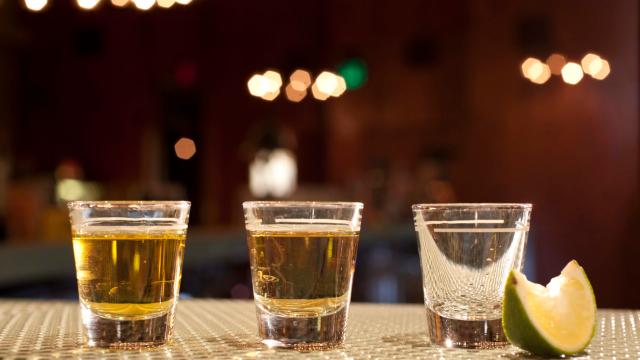Tequila has been having a moment of late. If you’ve noticed a spike in margarita bars recently, that’s not an accident. The spirit and its smoky cousin, Mezcal, are enjoying their time in the sun right now, and I for one am very happy about that.
The thing with tequila, however, is that there isn’t just one type. If you’ve ever perused the aisles of a bottle shop, you’ve probably noticed that there are three words commonly attached to tequila varieties: those would be Blanco, Reposado and Aňejo.
They each indicate that you’re looking at a different kind of tequila. So, what’s the difference?
Dan Murphy’s Category Manager Trading or Spirits and Premix, James Duvnjak, explained precisely what those terms mean, and how to get the most out of each type of tequila – using Rita Ora’s new Próspero Tequila brand as an example.
Why are there different types of tequila?
It all comes down to age.
“Tequila is categorised according to age as tequila’s flavour is impacted by how long it is distilled for and how long it is aged in barrel,” Duvnjak shared.
The time tequila spends in barrel influences the spirit’s flavour profile, which ranges “from citrusy flavours to notes of caramel and oak,” he said.
Tell me about Tequila Blanco
This is the variety most people will be familiar with. It’s often used in cocktails because of its classic flavours.
“Blanco is un-aged tequila, and [that] means it has been bottled within two months of distillation. As the name implies, the spirit is clear and the flavours reflect the agave plant, with notes of citrus and pepper,” Duvnjak shared.
The next time you decide to whip up a batch of margaritas, this is the kind of tequila you want to use.
How about Reposado?
This is where we start getting into the good stuff (if you ask me).
Duvnjak explained that “Tequila labelled Reposado is aged in barrels for between 60 and 364 days (less than one year), and the word means ‘rested’. The time spent in oak barrels will give the tequila not only its golden colours but also adds notes of oak and vanilla to the agave palate”.
You’ll notice Reposado tequila has a golden tone to it, and the richer flavour combination makes in perfect for sipping straight.
What’s Aňejo’s story?
As you can probably deduce, Aňejo is aged further again. This form of tequila is usually going to sit at a higher price point, and when you taste the difference you’ll see why.
Like Reposado, you’ll want to sip this guy straight. Some people enjoy it with a slice or orange and cinnamon, too.
Duvnjak explained:
“The word Añejo means ‘aged’, and for tequila to be labelled Añejo it has to be aged between one to three years in small oak barrels. Anejo takes Reposado’s flavour profile even further and has a bolder texture, and has rich flavours of caramel, oak and pepper.”
How about Mezcal?
Now, this is an interesting one. Mezcal is famous for having a smoky flavour, kind of like whisky. However, that’s not the reason it has a separate name to tequila.
Duvnjak shared that it has to do with the spirit’s birthplace:
“Just like Champagne has to be made in the namesake region with certain grapes and in a particular method, tequila has Denomination of Origin, which means it must be made from a certain type [of plant] – blue agave – and it can only be produced in five designated regions in Mexico. If it is made outside of the five designated regions, it is classified as a mezcal (even if it is 100% blue agave).”
Who knew?
Let’s start drinking?

If you’d like a cocktail that puts the flavour of Próspero Blanco Tequila on show, try out The RitaRita cocktail recipe.
What you’ll need:
- 60ml Próspero Blanco Tequila
- 4 fresh strawberries, crushed
- 1 teaspoon balsamic vinegar
- 15m orange liqueur
- 45 ml lime juice
- 15ml wildflower honey
- Garnish: 2 or 3 leaves fresh basil
Directions:
- Add all ingredients except the basil to a shaker, Shake vigorously and double strain into a chilled Margarita glass. Garnish with fresh basil leaves.
If you’d like to get your hands on a bottle of Próspero Tequila, the Blanco, Reposado and Añejo varieties are all available from Dan Murphy’s for $69.99, $74.99, and $79.99 respectively.
Cheers, pals.

Leave a Reply
You must be logged in to post a comment.